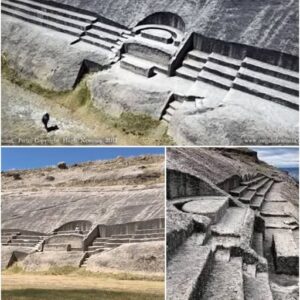The Great Pyramid of Giza, one of the Seven Wonders of the Ancient World, continues to captivate and intrigue scholars, historians, and visitors alike with its sheer size, complexity, and precision of construction. Standing tall on the Giza Plateau for over 5000 years, it serves as a reminder of the ingenuity and engineering prowess of the ancient Egyptians.
Among the many mysteries surrounding the Great Pyramid is the monumental task of cutting, dragging, and lifting an estimated 2.3 million stones to erect this iconic structure. Each stone, including the one highlighted in the title, played a crucial role in the construction process, symbolizing the unwavering determination and craftsmanship of the builders.

The process of quarrying and moving such a vast quantity of stones remains a subject of fascination and debate among experts. It is believed that the limestone blocks used in the construction were quarried from nearby sources and transported to the pyramid site on wooden sledges. The precise techniques employed by the ancient Egyptians to maneuver these massive stones continue to baffle modern engineers.
Despite the passage of millennia, the Great Pyramid stands as a testament to human ambition and innovation. The alignment of the structure with astronomical precision, the mathematical accuracy of its dimensions, and the sheer scale of its construction are all testaments to the advanced knowledge and skills of the ancient Egyptians.
The enduring legacy of the Great Pyramid extends beyond its physical presence. It represents a convergence of art, science, and spirituality in a single architectural marvel, inviting visitors to ponder the mysteries of the past and marvel at the achievements of our ancestors.
As we contemplate the significance of one stone among 2.3 million in the construction of the Great Pyramid, we are reminded of the collective effort, vision, and dedication required to create such a timeless masterpiece. Each stone bears silent witness to a bygone era and serves as a reminder of the enduring power of human creativity and ingenuity.
In conclusion, the Great Pyramid stands as a beacon of ancient wisdom and a symbol of human aspiration, inspiring awe and wonder in all who behold its magnificence. The single stone highlighted in the title represents not just a physical building block but a profound connection to our shared heritage and the remarkable achievements of the past.





